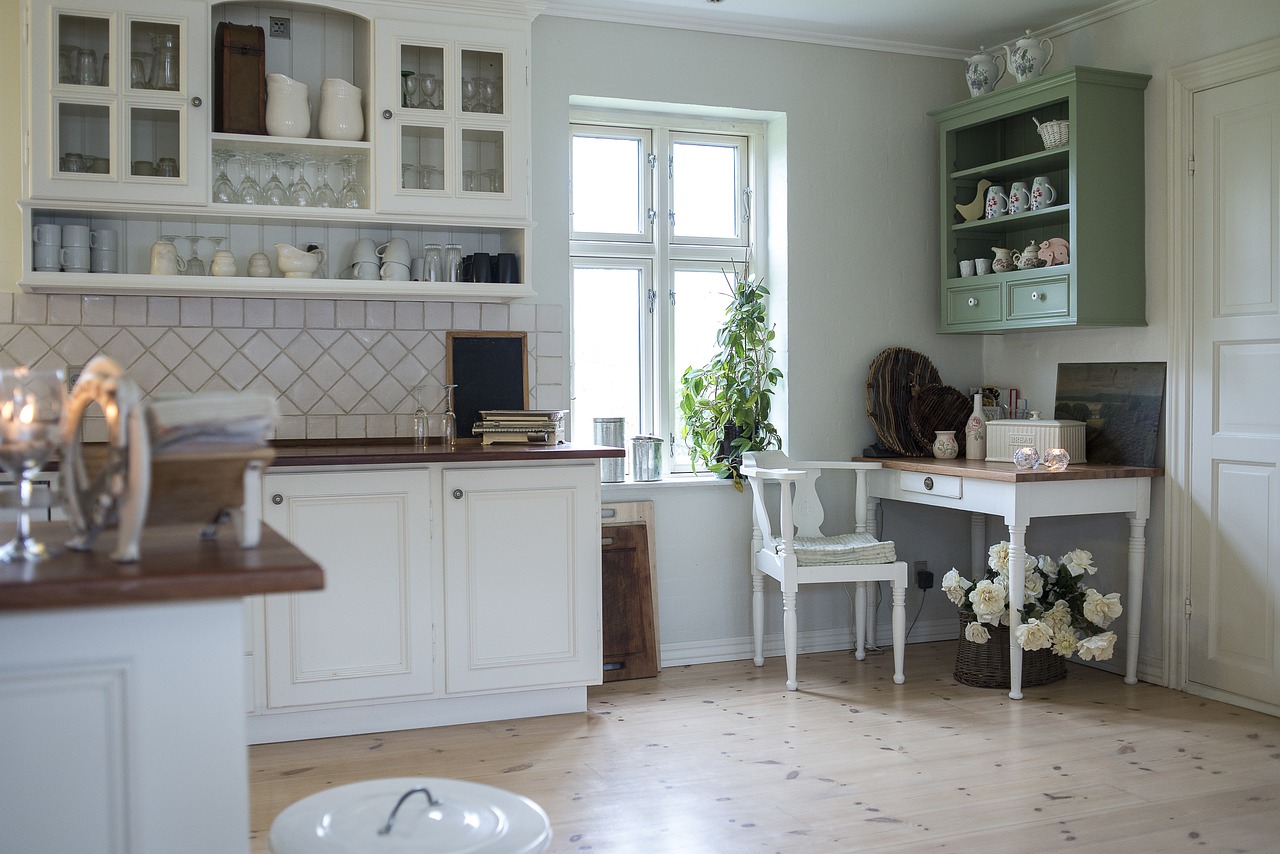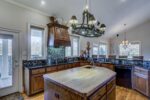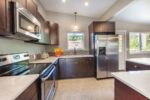To ensure your kitchen cabinets look and function well for many years, it’s essential to explore the various types of cabinets out there and select ones with longevity in mind.
When it comes to either remodeling or building a kitchen from scratch, selecting appropriate cabinetry is crucial as it is not only responsible for storage and organization, but also for catching the attention of anyone who enters the kitchen.
The availability of better material options and finishes has simplified the process of cabinet building for skilled DIY enthusiasts and enabled stores like IKEA to provide comprehensive kits of superior quality.
During your kitchen renovation, you will encounter an abundance of choices to make regarding the kitchen cabinets. You must choose between refurbishing, renewing, or replacing them, and then you must choose the type of material you want to use. This article will provide you with a guide to the optimal kitchen cabinet materials, as well as the advantages and disadvantages of each.
WOOD CABINET MATERIALS
Wood and wood-based materials are predominantly used in the construction of kitchen cabinets. Among the commonly used materials are hardwood, plywood, medium-density fiberboard, particleboard, and wood veneer.
HARDWOOD
When it comes to cabinet materials, hardwood stands out as one of the top choices due to its enduring popularity spanning several decades, since the advent of cabinets. Below are the advantages and disadvantages of opting for hardwood in your kitchen cabinets.
Benefits of using Hardwood
To assist you in making a decision on how to refinish your cabinets, listed below are the major benefits of utilizing hardwood as a cabinet material.
- Hardwood is, of course, a natural material, harvested from trees. Because of the natural element, this means that each panel can vary slightly, as individual trees have their own textures, colors, and grain patterns. This natural variation adds to the appeal of hardwood as a cabinet material – it’s truly unique and beautiful in its own way. Just like hardwood floors are highly valued, hardwood cabinets can be as well.
- Hardwood is highly durable, and it is also pretty easy to repair. You can even handle many of these repairs yourself (like for scratches, stains, and watermarks), through sanding or refinishing. You can also hire someone to help with these repairs for a reasonable price.
- Hardwood kitchen cabinets have a very long lifespan, due to their durability.
- There are many different kinds of wood to choose from, each with its own distinct look, feel, and coloring. Some of the most popular woods include red oak, white oak, hickory, cherry, hard maple, birch, ash, and pine.
Drawbacks of hardwood
Although hardwood possesses apparent natural beauty and attraction, its drawbacks must also be taken into account.
- Perhaps the biggest drawback of hardwood is that Hardwood is highly sought after, and is very expensive, as far as materials go, since the wood is costly. On average, wood (or wood-combination) cabinets “start at about $80 per linear foot, especially in the stock and semi-custom realm,” but the cost can easily double if you choose a high level of customization.
- Wood is heavy – if you want to go full hardwood with your kitchen cabinets, you need to make sure the structure is sound enough to support them.
- Different types of wood can be less durable than others. For example, red oak is a very strong, durable wood type, while something like pine is a softer wood.
- Warping is possible with hardwood. Changes in temperature and humidity will cause wood to contract and expand, so if you have a full hardwood structure, this is a potential concern.
One way to avoid the expensive price of hardwood is to combine various materials. Typically, this is done by utilizing hardwood exclusively for the face frame, door, and drawer fronts, while incorporating medium-density fiberboard or wood veneer components to bolster and decrease the expense. Familiarity with these methods can prevent your kitchen renovation from turning into a disastrous experience.
PLYWOOD
Plywood is another popular cabinet material and offers a host of benefits. It is created by laminating thin layers of wood on top of each other through a mix of glue, heat, and pressure, in alternating angles to create strength. According to Better Homes & Gardens, “varying the direction of the grain gives plywood equal strength in all directions.” Here’s what you need to know about hardwood, and how it functions as one of the best materials for cabinets.
The benefits of using plywood.
With a multitude of advantages, plywood serves as an exceedingly versatile material for cabinets.
- Plywood is considered by many to be the best option for cabinets – it resists moisture (unlike hardwood), is very flexible and easy to install, and is highly durable. It is certainly the “best material for cabinet sides, backs, shelves, and drawer bottoms”.
- Due to its unique construction, plywood has the highest strength-to-weight ratio of all of the best cabinet materials. It is very strong, and resilient as well.
- Plywood is easily repairable, and replaceable. It also withstands and holds up to drilling better than other materials. It is basically a homeowner’s ideal cabinet material.
- In terms of affordability, plywood is highly accessible. It’s much less expensive than hardwood but costs more than lower-end materials, like particle board and laminate.
Drawbacks of plywood
Although plywood has many advantages, it is also important to take into account its disadvantages.
- You need to make sure you are using the right thickness of material for each area of the cabinets. Thinner plywood is typically used on cabinet backs; thicker plywood is used on the drawer bottoms, as well as on the sides.
- Plywood cabinets may lack consistency. There may be “gaps or holes where the boards were combined,” which can make it more difficult to install plywood cabinets.
PARTICLEBOARD
Particleboard is often mentioned in contrast to plywood as another well-liked option for cabinet material. It is also referred to as low-density fiberboard (LDF) or chipboard and is created by pressing together scraps of wood, like wood chips and sawmill shavings, and then forming them into sheets. To enhance its appearance, particleboard is coated with a laminate or a wood veneer. The following are some noteworthy benefits and drawbacks of particleboard.
The benefits of using particleboard.
Particleboard offers a great deal of affordability as a cabinet material – presented are the key advantages of particleboard.
- Particleboard is inexpensive – one of the most affordable cabinet material types available for purchase. This is because particleboard is made with scrap materials. In general, according to KompareIt, the cost savings is generally 10 to 20 percent for mid-grade cabinets (compared to a high-grade cabinet set made from plywood).
- High-quality particleboard can be very sturdy and durable. You just have to make sure you use a high-quality option.
- Particleboard is one of the best choices for cabinet and drawer interiors. It’s lightweight, cost-effective, and easy to fit into the necessary spaces.
Particleboards have certain drawbacks.
Although particleboard may offer cost savings, it is important to acknowledge the potential downsides associated with it.
- Unless you find a very high-quality variation of particleboard, for the most part, it is not very durable. Due to its construction, particleboard is “weak in compression and tension” (Cliq Studios).
- Particleboard is not moisture-friendly and can degrade and discolor if it comes into contact with water.
- If cabinets or drawers are overfilled, cabinet shelves and drawer bottoms made of particleboard can fall victim to sagging.
MEDIUM DENSITY FIBERBOARD
For those seeking a material with superior quality than particleboard but not as costly as plywood, an excellent alternative is the medium-density fiberboard (MDF) for your cabinets’ doors and drawers. Its strength lies in its smaller fibers compared to particleboard. MDF has gained popularity for being used in IKEA cabinets and is a composite material comprising recycled fibers, wax, and resin that are compressed and sealed under high pressure. The following are some of the crucial pros and cons of MDF as a cabinet material.
The benefits of medium-density fiberboard
It is important to know the advantages of MDF, which is considered to be one of the top materials for cabinets.
- Due to its unique composition with smaller fibers, MDF is strong and highly durable.
- MDF is resistant to warping and expansion from temperature changes and moisture.
- Since the surface of medium-density fiberboard is smooth in finish, it lends itself well to being painted or stained.
- MDF offers superior screw-holding power, and is fairly easy to manipulate, as far as cabinet materials go.
Drawbacks of Medium-Density Fiberboard
Apart from the benefits mentioned earlier, there are a few shortcomings that you must be aware of before buying fiberwood.
- MDF is not as strong as other cabinet materials, like plywood or hardwood. It is susceptible to sagging and damage if cabinets and drawers are overloaded.
- Some people have concerns about MDF due to its material makeup. “Of all the pressed woods, medium-density fiberboard emits the greatest amount of formaldehyde gas, according to the National Kitchen and Bath Association”. So if you are highly concerned about materials that are used in your home, you will want to do extra research before moving forward with MDF.
WOOD VENEER
Wood veneer is an alternative material choice for kitchen cabinets, consisting of a thin layer of solid wood that is peeled from a log. Although it shares many of the benefits of hardwood, its limited usage warrants consideration of other unique attributes.
The benefits of utilizing Wood Veneer
- Wood veneer is usually used in tandem with other materials. Wood veneers, which are usually less than 2mm thick, “are typically glued and pressed to particleboard or MDF to produce flat panels”. In this way, homeowners can reap the aesthetic and durability benefits of hardwood, but save costs by leaning on plywood, particleboard, or MDF to compose the whole of the cabinets.
- Wood veneer is preferred over other top finishes since it is lightweight yet stable.
- Wood veneer is also an affordable variation of true hardwood.
The drawbacks of utilizing wood veneer.
Although wood veneer has very few actual downsides, it is important to be aware of certain guidelines for its proper use.
- Most notably, it should be known that wood veneer is a finish material, and should not be used for cabinet interiors (e.g. the box or frame), only for cabinet doors. You will have to choose another material option, such as plywood, particleboard, or MDF to construct the interior of the cabinets.
LAMINATE
Laminate is a fabricated material that has a sleek, plastic-like texture and can be affixed onto plywood or MDF. It is commonly utilized to reface cabinet doors. According to Advanced Builders and Contractors’ CEO, Nick Yahoodain, laminate is obtainable in two forms: low-pressure and high-pressure. Brands such as Formica and Wilsonart market high-pressure choices that are more resistant, whereas low-pressure options like melamine are less expensive.
Although laminate’s sleek texture enables effortless cleaning, those who intend to paint it should be aware that it is a challenging material to coat. If you wish to alter the hue of your laminate cabinets, you’ll have to sand it and utilize specialized paint that bonds to the surface accurately.
Advantages: Simple maintenance. Affordable. Diverse selection of hues and false wood textures.
Downsides: Painting can be a challenge. Repairing can prove to be difficult.
THERMAFOIL
Thermafoil is a covering that is similar to laminate, except it is manufactured with vinyl rather than plastic. The process of applying it involves passing a piece of MDF or plywood through a machine that uses heat and vacuum to seal the Thermafoil to the surface. Although Thermafoil is less expensive than laminate, it is also more prone to peeling.
It’s important for DIYers to understand that painting Thermafoil cabinets can be difficult, similar to laminate ones. Yet, because of the diverse selection of colors and finishes available, you have a higher chance of discovering the ideal color choice.
Advantages: Affordability. Simple to maintain cleanliness.
Drawbacks: Prone to peeling rather than being laminated. Challenging to coat with paint.






